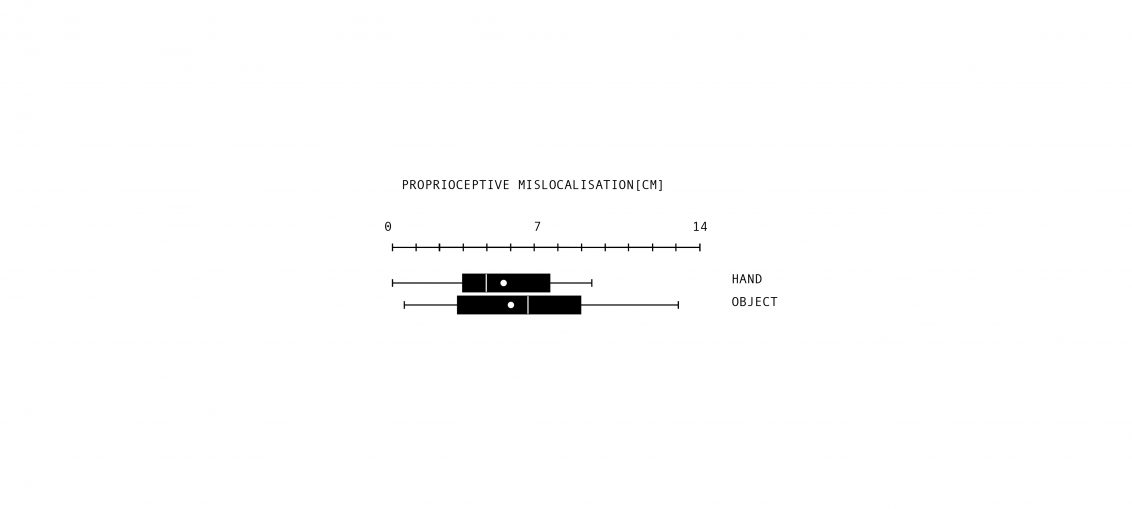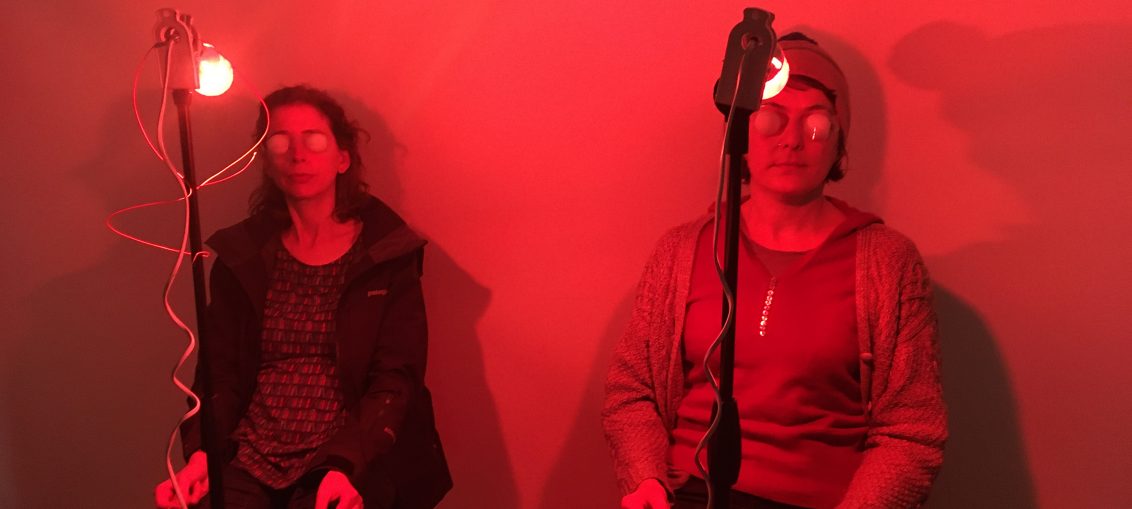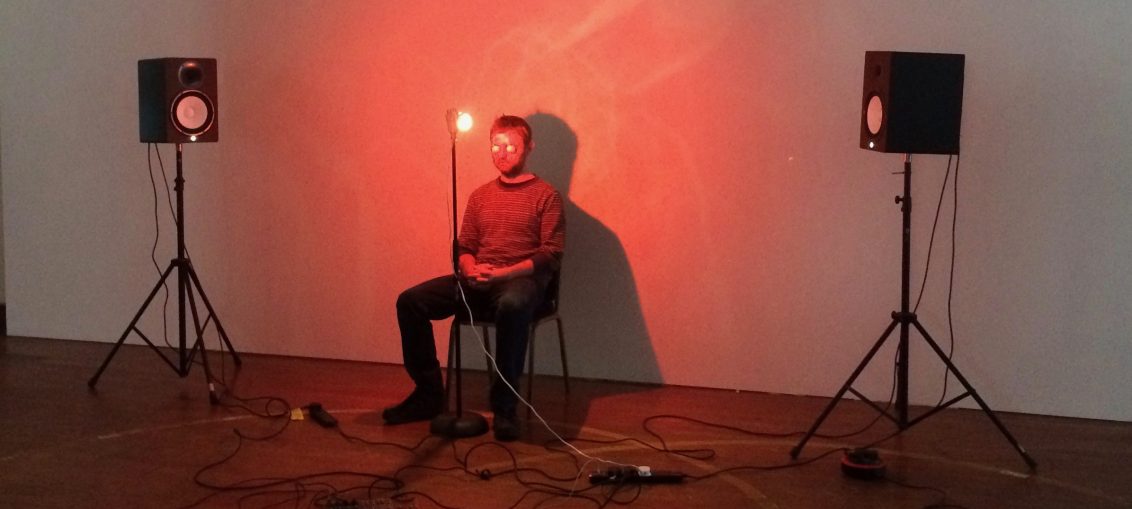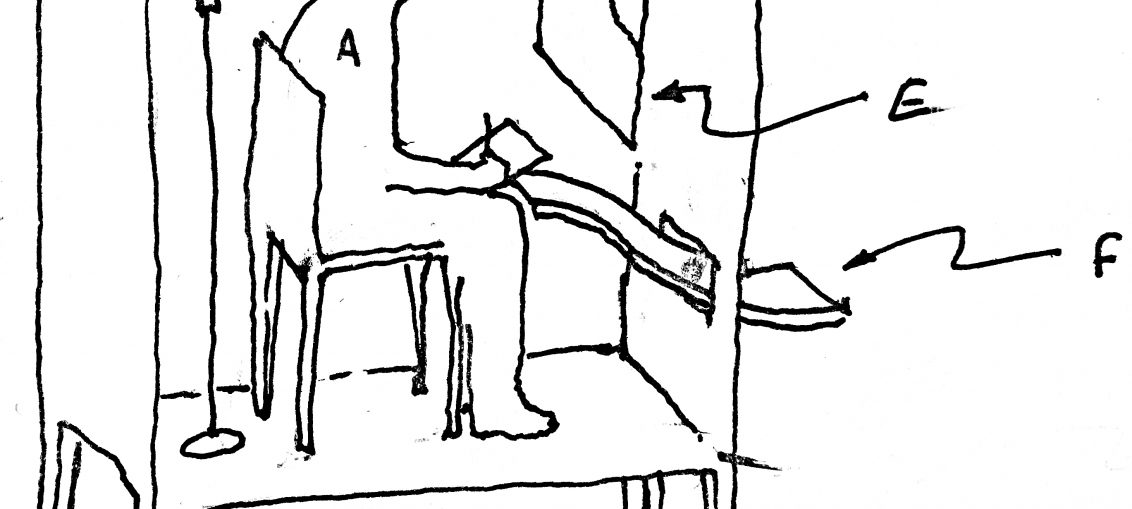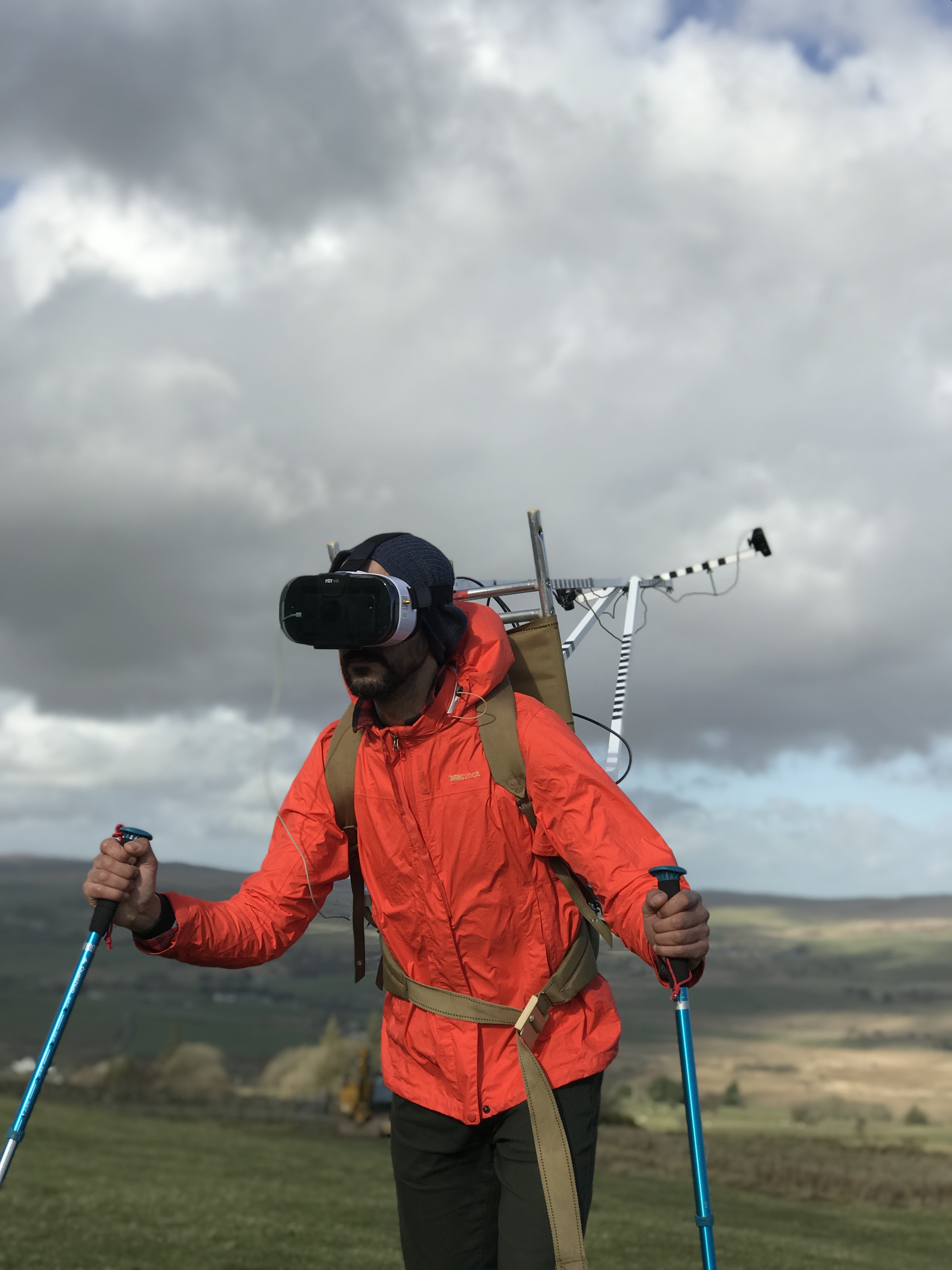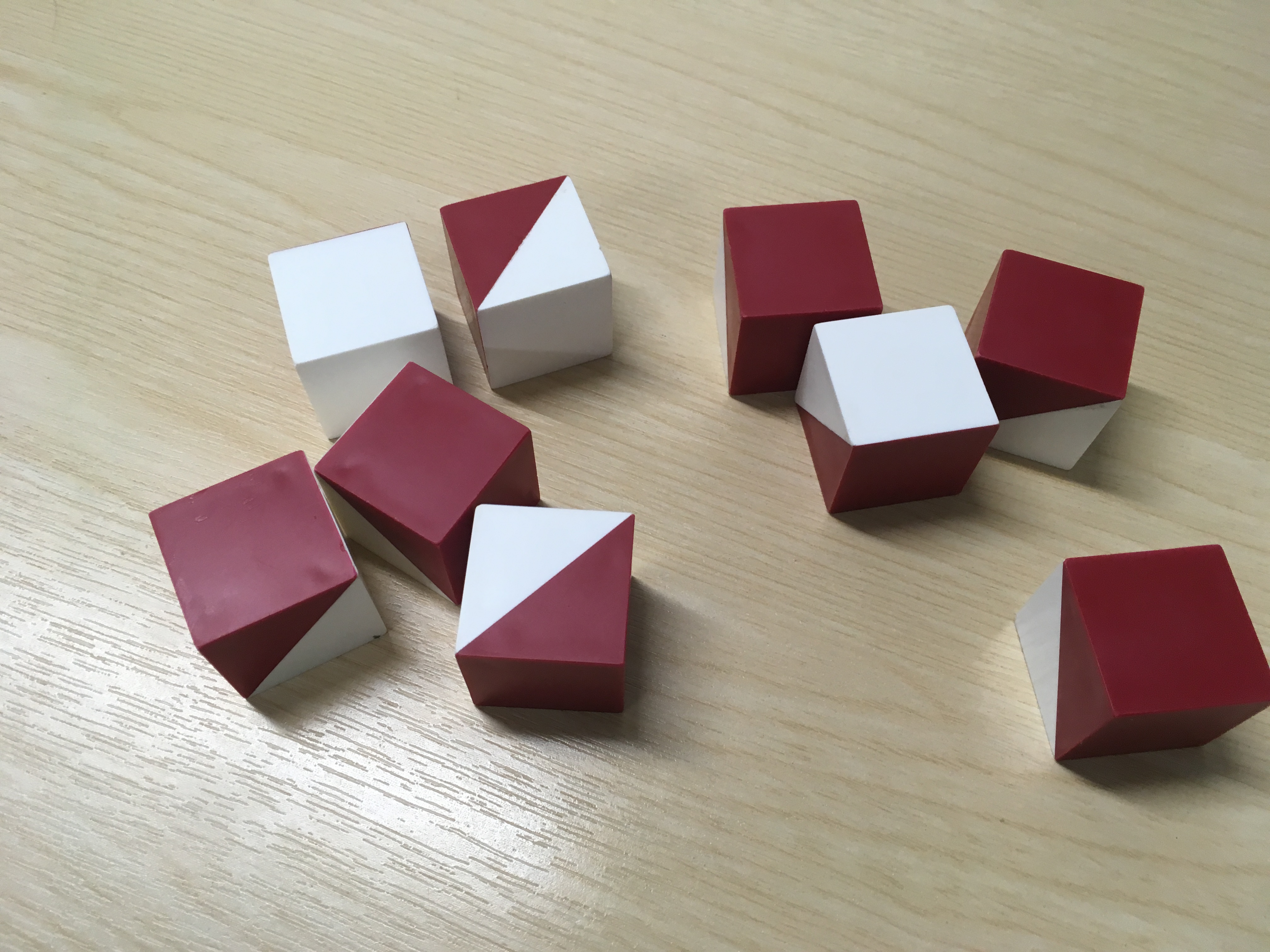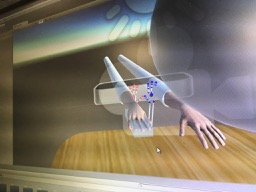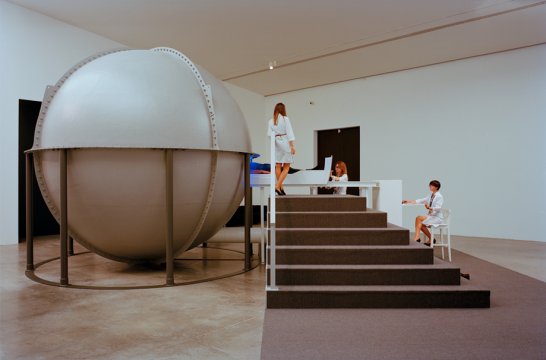Drawing of experimental apparatus. Participatory work. As yet unrealised. OLFACTION EXP. 8 / A0 drawing 2020 OLFACTION EXP. 8 / A0 drawing 2020
Tag: Experiment
The Clay Hand Illusion and the Embodiment of Unfeasible Objects
"In an artistic exploration, clay hands and non-hand-like, unfeasible clay objects were created by the participant and used to perform an alternative version of the rubber hand illusion. Most participants felt ownership even over these unfeasible objects, raising questions about the embodied experience of objects that we make." https://journals.sagepub.com/doi/full/10.1177/0301006620948502
Object without perception: Obscurist edition
Another Object without perception workshop took place online in the form of the Obscurist edition [an extremely limited edition of 1] which included content designed especially for Wes Whites Wedding Ritual Project. A video was used during the workshop with flickering blue and white frames which provided the visual stimulus for the ganzfeld experience. Object without perception: Obscurist edition Object without perception: Obscurist edition Using the screen sharing facility of Zoom made for a strange intermittent, irregular flicker. Having run out of ganzfeld goggles I participated with my eyes closed.
Measuring Anomalous experience.
Questionnaire results
Mirror Gaze Experiment @MSP
I have been working with Manchester Science Partnerships to develop a range of workshops for their customers, the resident companies that use the park. The first session was the 'mirror gaze experiment'. During the mirror gaze experiment [MGE] participants are asked to stare at their own reflection in a mirror in a nearly dark room. An outline of the head is visible as a faint silhouette. In this state of partial sensory deprivation, the brain struggles to make sense of the information it sees. Forms and shapes begin to emerge as if from nowhere. For many observers, these develop into vivid visual hallucinations “monsters, archetypical faces, faces of relatives, and animals” (Caputo, 2012; Bortolomasi et al., 2014). This
Concerning the inwardly generated image
Sum Total Of All The Actions 3
Sum Total Of All The Actions 2
Mirror gaze experiment
The mirror gaze experiment requires the participant to sit in a near dark room and to stare at their own reflection for a set amount of time while listing to white noise. After only a short amount of time most people experience powerful illusions of facial distortion, grossly exaggerated features, faces of animals, the face of a lion or Darth Vader for example. These emerge as if from nowhere, disappearing at the slightest movement or eye blink, before manifesting new forms. These flowing cascades of illusory effects can elicit powerful emotional responses. In my own research, the mirror gaze experiment has resulted in significant illusory experiences across the full range of participants. I documented the way in which the illusory experience
Autoscope prototype
Autoscope builds on laboratory-based simulations of out of body experiences; the portable device allows the participant to freely navigate the world, experiencing themselves in 3rd person, as part of the landscape via a live video feed to a head-mounted display. The visual mechanisms are important in this illusion, but tactile and sonic stimuli further strengthen the effects. Autoscopy can be described as the disembodied perception of seeing one own body from an elevated or distanced location outside the body. The phenomena of the ‘out of body experience’ during heightened states of heightened consciousness or near-death experience tend to have spiritual or shamanistic connotations, but in recent times science has done much to demystify this phenomenon, identifying the neural mechanisms responsible.
Ganzfeld and Mirror Gaze
1-1 experiment sessions in the studio I invited participants to come to my studio to take part in phase 2 of my research. This opens up to using the Ganzfeld and the Strange Face in the Mirror Illusion. Both use white noise connected to a system of biofeedback, using Galvanic skin response signals to subtly modulate the noise. Through this, I have been developing my interview technique and also the working questions that I ask. This has resulted in a new artwork which is taking the form of a questionnaire. Currently, I'm referring to it as the "Hall Anomalous Perception scale" a tongue in cheek reference to the Cardiff scale designed to asses experiences of anomalous perceptions in daily life. A participant
Clay Hand Experiments
Workshops at Manchester City Art Gallery The aim was to deliver an engaging fun activity for all the family which related to the theme of the body and ideas around perception illusion referencing the Leonardo show as well as the Bridget Riley drawings in the Gallery. The workshop was open as a drop-in open to the general public and over the 8 days, we had around 800 people take part in total. The workshop served as an introduction to the idea of ‘perceptual and multisensory illusions’ and was based around my Clay Hand Experiment. I asked participants to work collaboratively to create their own hands and 'unfeasible objects 'with which to perform their own experiments on each other. It provided a
Mirror Gaze Box
A rapidly prototyped blackout box for the mirror gaze box, this is to create a dark space for the Mirror Gaze Experiment. Inside is an Infra Red LED spotlight and modified web camera. The camera films the participant in real time from behind a two-way mirror, as they experience the illusory effect of sensory deprivation. Mirror Gaze Box - prototype
Psychometric tests
I took part in a study at BEAM LAB as a 'neurotypical control subject. This was my first experience in experimental psychology as a participant. I found this deeply significant for my research; actually experiencing the full process of an experiment in the context of a lab. There were a number of questionnaires and tasks. Psychometric tests are concerned with the measurement of mental abilities, personality traits, intelligence. Typically these will be questionnaires and other puzzles 'tasks'. I found the activity to be deeply relaxing. also the format, in my opinion, ripe for creative subversion. It generated a lot of new ideas which I will write about this experience in more detail soon.
Constructing a sense of self
"He felt dizzy, stood up, turned around, and saw himself still lying in bed. He was aware that the person in bed was him, and was not willing to get up and would thus make himself late for work. Furious at the prone self, the man shouted at it, shook it, and even jumped on it, all to no avail..." This article encapsulates some of the most important ideas, concepts and developments which lead towards the experiments on the simulation of out of body experiences. The article mentions Peter Brugger, Olaf Blanke and Thomas Metzinger, as well as some details of patient experiences, and the story of how this experiment came about. As well as the illusion of seeing one's self"autoscopy' There
Eye tracking in arts research
Notes from the Digital Humanities, Human Technologies / AHRC NWCDTP Postgraduate Conference 2018 / part 1 https://nwcdtpconference2018.wordpress.com/home/ John Merrill [MMU] presented his project; Portrait as Landscape: Rendering the Unseen surface of the face. He explained some ideas behind visual perception and the evolution of the eye, and its flaws which were a great introduction to the project. Merrill creates digitally processed high contrast, large-scale photographs. Sharpening and enhancing the surface topography and textures of the face. The idea is that attention is taken away from thinking about the character of the person pictured, and moving away from the stereotypes associated with how we recognise faces and make judgments about character. The idea is that we are left to think about the more
Carsten Holler / Olafur Eliasson
Carsten Holler is a key example within this study, often re- appropriating science for the purposes of art. Staging ‘Quasi-scientific’ experiments (Windsor, 2018) which transform the gallery into a laboratory. Often disorientating the viewer, or more appropriately, the participant. As well as the large-scale installations smaller performative works such as ‘Kit for Exploration of the Self’ (Carsten. Holler, 1995) take the form of durational perception changing instruments such as ‘Upside Down Glasses’ (Carsten Holler, 1994-2018). These both directly re-appropriate methods from experimental psychology (Stratton, 1896). Many of the works require the participant to travel through them or offer the opportunity to make decisions of which there are no return or unknown outcomes, further reinforcing this active notion of experience as
Augmented hands
‘Augmented hand series’ by Golan Levin, Chris Sugrue, and Kyle McDonald, 2013-2015) ‘MIRAGE Illusion Box’ (Roger Newport, 2008) These are two very similar projects which both transform the image of a hand in real time using Augmented Virtuality (AV, the digital manipulation of real-world objects). Both take the form of a black box, into which the hand is placed. When inside the participant can see their hand as if looking through a window into the box. Inside the box, a system of mirrors and motion tracking is used. An augmented or distorted digital image of the hand is relayed to a screen on the top of the box. Despite the technical similarities, both works stem from entirely different motivations. The ‘MIRAGE Illusion Box’ (Newport, 2018)
Be Another Lab
This International group interdisciplinary group adopt mechanisms employed in the cognitive sciences, such as the work of Mel Slater, and the arts. Their project ‘The Machine to Be Another’ allows anyone to experience a perspective from the body of an-other. The group speak of ‘expanding subjective experience’ and ‘understanding the relationship between identity and empathy from an embodied perspective’ (http://beanotherlab.org/) Using HMDs and live video, they have developed a number of critical applications. Investigating a wide range of issues including gender and disability. The group study the impact this work can have on people’s lives, employing methods of action research and co-creation. Be Another Lab embraces an open source approach. Sharing and developing their project through workshops, making the tools and
Labyrinth Psychotica
Labyrinth Psychotica is an artistic research project that aims to simulate the experience of psychosis. It uses multisensory [tactile and sonic] elements in combination with the maze environment, to create a fully immersive experience. The maze mechanism also serves as a metaphor for attempting to get inside the mind of another. The investigation aimed to not only portray an experience of psychosis but one that was ‘artistic’. It further asks if such an endeavour could prove ‘useful’. Though I can only speak from my experience of the work [1], it did seem effective in conveying elements of this experience, such as; loss of personal boundaries, and blurred borders between the body and space. Another element which resonates with Action Lab is the
Meeting With Sally Linkenauger
Notes from a meeting With Sally Linkenauger Lancaster University Psychology Dept. After discovering Sally's research at the BRnet conference I wanted to experience her experiments, so I asked if I could visit her lab. The VR lab looks like a normal office space, PCs scattered around the outside, and loads of VR tech hanging around. On closer inspection, a network of cameras is installed around the space to enable complex motion capture and augmented reality experiments to be undertaken. There is a treadmill in the corner. In the experiment I tried, a leap motion sensor captures the movements of your real hand, allowing you to articulate a virtual hand. The experiment requires some time to become used to the VR environment. At first,
The Multi-faceted body
A few notes from the BRnet Conference the Multi-faceted body. June 2018, Heriot-Watt University, Edinburgh, UK I felt strangely at home among so many research projects that use the hand as a model for the wider issues of body representation and ownership. Keynote speaker Mel Slater's talked about his playful and engaging research. Slater’s work centres around the idea of using immersive virtual reality as a medium to transform the self, not just the reality of a space. His research projects include self-help therapy. The project Personified Self Interaction (Osimo et al., 2015) allowed ‘you’ [embodied within an avatar of Freud] are able to talk to ‘yourself’ [an automated replay of you, embodied within an avatar of yourself] and vice-versa. This enables the
Phantom Presence
This experiment induces the sensation of a phantom presence in the room. The participant blindfolded is asked to use a stylus to prod an empty space in front of them. Using a tactile feedback system and a robot arm, the participant feels as if they are prodding themselves in the back. As the experiment progresses the system adds a delay to this prodding. At this stage, the participants become freaked out believing that someone else if prodding them... https://youtu.be/GnusbO8QjbE Link to the paper... Neurological and Robot-Controlled Induction of an Apparition https://www.cell.com/current-biology/abstract/S0960-9822(14)01212-3
Augmented senses
In this experiment, they created a simple device [Hearspace App] incorporating a compass and headphones. It "allows users to reliably hear the direction of magnetic North as a stable sound object in external space on a headphone. They found that "long-lasting integration into the perception of self-rotation. Short training with amplified or reduced rotation gain in the magnetic signal can expand or compress the perceived extent of vestibular self-rotation, even with the magnetic signal absent in the test" I was struck by this statement "sensory substitution and augmentation research has aimed to restore sensory functionality from non-invasive afferent signals of artificial sensors...there has been little concrete evidence that truly perceptual experiences have ever been obtained via this approach" Sensory augmentation: integration of an auditory
Illusions of Invisible, alien hands, 3 arms, and shrinking bodies…
I have previously posted about the original 'rubber hand illusion' in which participants are convinced a fake rubber hand is their own. A classic low tech experiment that can help us "understand how sight, touch and “proprioception” the sense of body position, combine to create a convincing feeling of body ownership, one of the foundations of self-consciousness (Nature 1998, vol 391, p 756 )” Further to this research recent studies have gone on to experimentally induct of out of body experiences or create body swap illusions. [ Henrik Ehrsson and Olaf Blanke http://www.eurekalert.org/pub_releases/2007-08/ucl-foe081407.php ] Between these two experiments, several interesting versions of hand-related experiments also exist which demonstrate the plasticity of our body perception... The Alien Hand Experiment first created in the 1960s predates the Rubber hand experiment, seems more 'trick'
Mixing object actions and context
This research looked at how we respond to the observation of actions and how the context affects our neural processing of that action. I was fascinated to learn simply by observing an action with an object that can be potentially used for an action - such as a potato peeler - the brain seems to simulate this action. But what happens when we observe an object being used for an action in an unusual context? Or what happens if we see an object being used for an unusual action, perhaps even in an unusual space. The experiments used videos of a person performing a task with specific objects in specific contexts such as cracking and egg into a bowl in the kitchen. and was then repeated in
Rubber hands ‘feel’ touch that eyes see
The first report on the Rubber Hand illusion. Published in Nature in 1998 by Matthew Botvinick, and Jonathan Cohen of the Department of Psychiatry, University of Pittsburgh... "We report here an illusion in which tactile sensations are referred to an alien limb. The effect reveals a three-way interaction between vision, touch and proprioception, and may supply evidence concerning the basis of bodily self-identification." "It has been proposed that the body is distinguished from other objects as belonging to the self by its participation in specific forms of intermodal perceptual correlation7,8. Subjects in our first experiment who referred their tactile sensations to the rubber hand also consistently reported, in both sections of the questionnaire, experiencing the rubber hand as belonging to themselves. Indeed,
James Turrel – Light Reignfall
[vimeo 75419053 w=640 h=360] James Turrell's Light Reignfall @LACMA - Andrew van Baal James Turrell's Light Reignfall Light Reignfall is a work from his series of perceptual cells, inside the participant is exposed to a uniform homogenous field of modulated light. A combination of sensory overstimulation, yet deprived of recognisable forms or space, hallucinatory effects are experienced. “Assisted by an attendant, an individual viewer enters a spherical chamber on a sliding bed. A program of saturated light (operated by a technician) surrounds the viewer for twelve minutes, allowing the visitor to experience the intense, multi-dimensional power of light and the complex seeing instrument of the human eye.” "James Turrell (b. 1943, Los Angeles), a key artist in the Southern California Light and Space movement
God Helmet
Neurologist Michael Persinger created the God Helmet, an actual helmet modified with electrical coils that can create electromagnetic fields in the wearer's temporal lobes that induces "religious" experiences in the people who put it on. "This is a device to investigate whether religious, spiritual, and mystical experiences had a natural rather than a supernatural source. He speculates that we are somehow programmed so that they can generate religious experiences via our brain's internal processes." I was interested in this experiment because of its use of sensory deprivation and the fact it would be relatively easy to recreate [see my DIY neurostimulation attempt 2009] for my Enki project. My plan was to drive it with frequencies generated by my electric fish [a low



